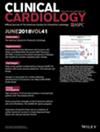Association Between Educational Inequality and Income Inequality With Metabolic Diseases and Cause-Specific Mortality
Abstract
Background
Educational attainment and economic status are important socioeconomic characteristics and are associated with metabolic diseases and premature death risk. However, their relative importance and contributions to premature death remain unclear.
Methods
Data were collected from ten survey waves of the National Health and Nutrition Examination Survey from 1999 to 2018. Deaths before age 75 from all-cause and cause-specific mortality were ascertained from linkage to the National Death Index with follow-up through 2019. Weighted Cox proportional hazard models were used to estimate the hazard ratios (HRs) and 95% confidence intervals (CI) for death by educational attainment and income level. Population-attributable fractions (PAFs) were calculated to quantify the proportional contributions of low income and low educational attainment to mortality.
Results
Over an average of 10.1 years of follow-up, 4310 premature deaths were confirmed from 43 637 participants. Low income and low educational attainment were associated with increased risks of all-cause and cause-specific mortality, respectively. The associations between low educational attainment and mortality risk disappeared after mutual adjusting for income and education. However, among those with high school education or above, the adjusted HRs of middle income and low income were 1.81 (95% CI, 1.48–2.21) and 2.88 (95% CI, 2.31–3.59) for all-cause mortality. The PAF showed that low educational attainment did not contribute to mortality, while 33.0% of premature deaths were attributable to low income.
Conclusions
Income had a greater impact on mortality risk than education. The disparities in mortality risk could be reduced by narrowing the income differentials.


 求助内容:
求助内容: 应助结果提醒方式:
应助结果提醒方式:


